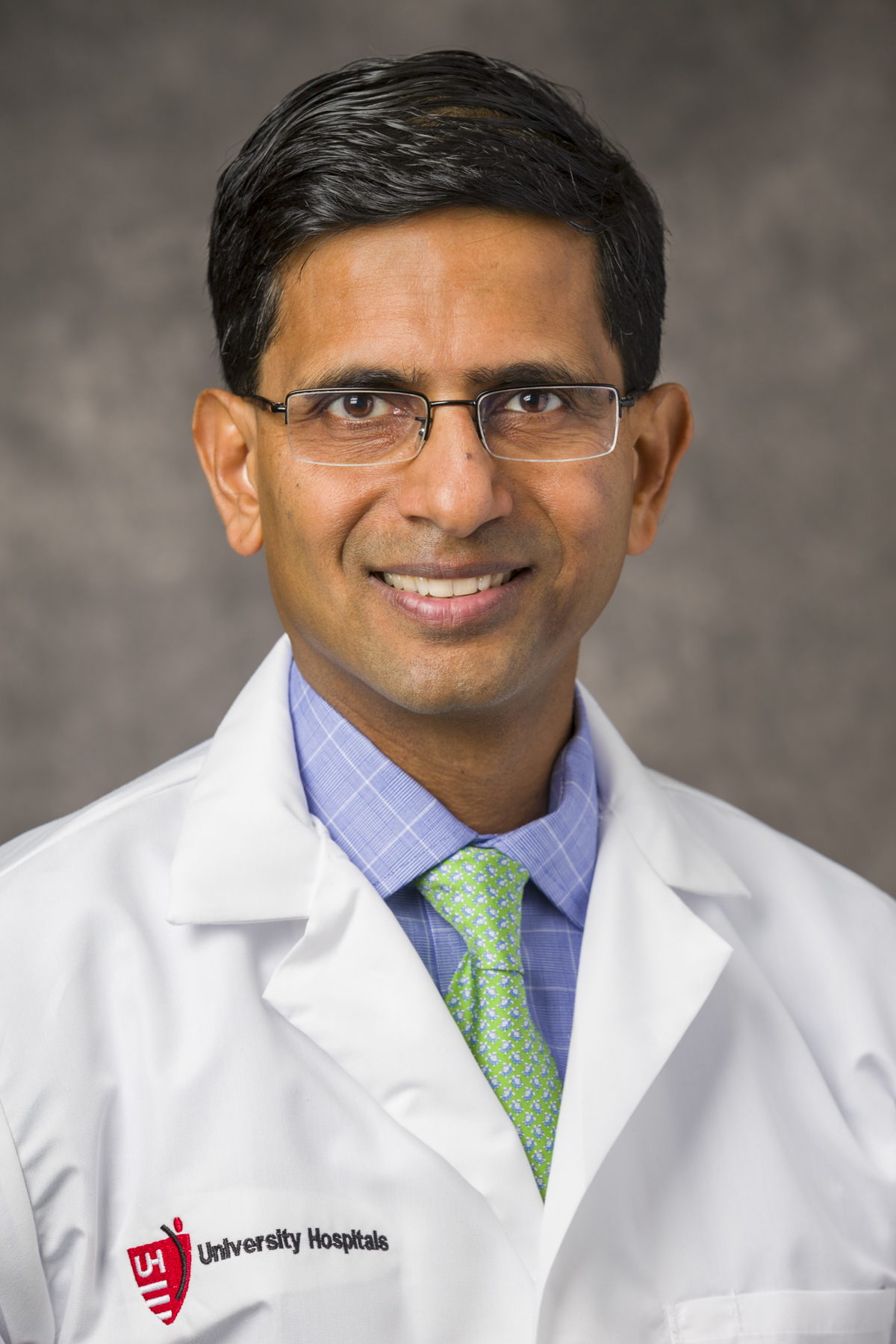University Hospitals Introduces Exercise MRI
May 29, 2017
High-Resolution images can predict previously undetectable abnormalities
Harrington Heart & Vascular Institute Innovations – Spring 2017
 Sanjay Rajagopalan, MD
Sanjay Rajagopalan, MDThe search for improved imaging modalities is a constant in cardiovascular medicine. Physicians find themselves chasing the next best test that will increase their diagnostic accuracy, in the never-ending pursuit of strategies that will predict the “future.” University Hospitals Cleveland Medical Center cardiologists have developed a new generation of cardiac testing that is yielding high-resolution images that may have the potential to provide improved information to predict future heart attacks and risk for future cardiovascular events.
Researchers have developed a system that combines all the advantages of cardiac magnetic resonance imaging (MRI) with the exercise information from a treadmill. Such a system is now in use at UH, one of just a handful of sites nationwide with the specialized equipment.
Patients with known or suspected coronary artery disease typically undergo the combination of treadmill exercise with echocardiography or nuclear testing. However, each has its limitations. The quality of images from echocardiography varies with the skill of the operator, while the nuclear stress test exposes patients to ionizing radiation. The exercise information is sometimes foregone in lieu of tests that use medications to simulate exercise. The use of medications or so called “pharmacologic stress tests,” although useful in some cases, does not simulate exercise, which provides invaluable prognostic data.
“We can detect subtle abnormalities in the heart such as deficient blood flow and also visualize scarring where previously we were unable to obtain these additional facets of information,” says Sanjay Rajagopalan, MD, Chief, Cardiovascular Medicine, University Hospitals Cleveland Medical Center, of the new imaging system. “The major innovation is in the MRI-compatible treadmill, located immediately adjacent to the MRI table in the testing room. Its location allows the patient to be imaged during and immediately after completing the exercise stress tests, as with stress echocardiography. In tests of the technology, imaging is begun within 30 seconds of cessation of peak treadmill performance. The other major advance is in pulse sequence design that allows rapid imaging of the heart at high rate rates with adequate resolution. This allows assessment of wall motion abnormalities as well as evidence of ischemia by assessing changes in contrast perfusion and also an assessment of scar or myocardial infarction. The ability to simultaneously probe and obtain information on all of this provides for unparalleled versatility.”
Non-ferrous materials that do not interfere with the magnet make the treadmill’s proximity possible. These include plastics, fiber optic cables, stainless steel and aluminum. The treadmill itself is powered by a hydraulic system, rather than a traditional electrical motor. Hoses 40 feet in length connect the drive motor and lift cylinder to an electric motor-driven pump and solenoid valves located outside of the MRI room.
For their first project with the new system, UH cardiologists are examining the development of pulmonary artery hypertension (PAH) in patients with HIV. The project, funded by the National Heart and Lung Blood Institute, seeks to determine whether the technology will help reveal early signs of disease in patients with PAH. For this study, the exercise MRI system will be coupled with a cardiopulmonary exercise testing unit (CPET) that will provide the equivalent of a detailed assessment of exercise capacity of the individual measured in the amount of oxygen consumed and carbon dioxide exhaled. Together, CPET-exercise MRI will provide a spectacular high-resolution dimension into an individual’s cardiovascular performance, including an assessment of contractile performance of the right and left ventricles.
“PAH is 2,500 times more common in people with HIV than in those without and is often not diagnosed until late in the disease,” Dr. Rajagopalan says. “We can analyze oxygen consumption as well as carbon dioxide output while patients are on the treadmill. This paradigm can also be used in a variety of other conditions to refine our diagnostic ability, including heart failure, rhythm disturbances and for valvular heart disease.”
Dr. Rajagopalan also anticipates tremendous utility for the system in the evaluation of competitive athletes.
“This tool may very well come in handy for the assessment of athletes such as Cleveland Browns players in conjunction with UH’s affiliation as the team’s Official Health Care Partner,” he says.
“The availability of cardiac MRI information at rest and in response to exercise is innovative and allows for gathering comprehensive information,” Dr. Rajagopalan says. “Using cardiopulmonary testing in conjunction with exercise MRI allows us to discriminate patients with alterations in exercise capacity and shortness of breath due to a variety of conditions. We anticipate that the use of this modality at UH will provide a tremendous tool to better serve our patients and allow us to apply this in various research scenarios.”
For more information or to refer a patient for an MRI exercise stress test, please call 216-844-1700.


